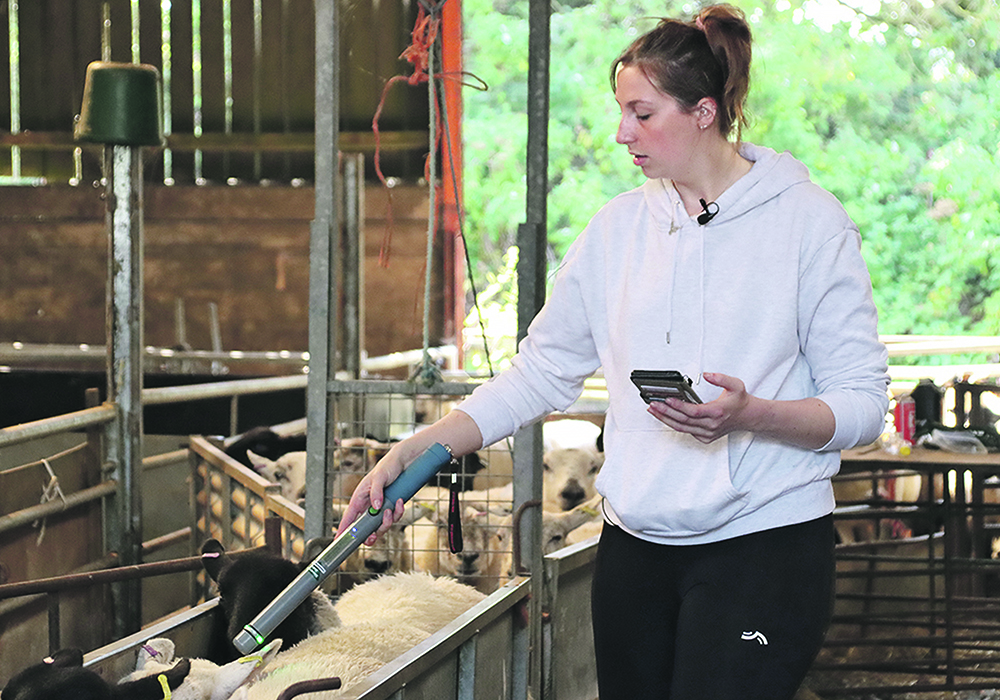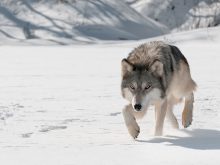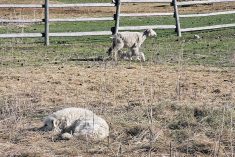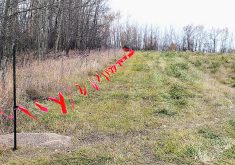A 10-year-old Saskatchewan initiative to reduce sheep losses to predators has expanded its RFID technology acceptance
A change to the Saskatchewan Crop Insurance Corp.’s RFID Sheep Policy is making participation easier for sheep producers.
The pilot began in 2014 with a goal to provide producers with a goal to compensate producers for predation and to prove without physical evidence that an animal was missing.
To do so, it used data from the radio frequency identification Shearwell scanning system.
Read Also

Feds propose overhaul of chronic wasting disease control program
Chronic Wasting disease control program getting updated by Canadian Food Inspection Agency with feedback encouraged from producers.
Before 2014, many sheep producers were losing lambs but had no evidence for a claim. Predators such as wolves and coyotes can easily grab the small animals and disappear, leaving no evidence for adjusters to see and prove the claim.
Data from the RFID scanning systems is a way to work within current regulations. It provides proof of a missing animal without the kill site and enables a producer to receive compensation of half the animal’s value, a significant improvement from the previous situation where no evidence meant no compensation.
This year, after discussions between the Saskatchewan Sheep Development Board (SSDB) and SCIC, the policy is expanding its technology acceptance.
“New for 2024, we will accept any electronic RFID scanning systems they (producers) have as long as they can produce the required reports to make sure that they’re eligible,” said Darby Warner, SCIC’s executive director of insurance.
“So the information no longer needs to come only from the Shearwell data system.”
Over the last 10 years, the highest number of participating producers was 15. This varied from year to year, but participation has dwindled in recent years as producers retired from the industry and more scanning systems have been introduced.
It’s hoped expanding the number of accepted systems will increase participation numbers. In the SSDB’s Sept. 12 newsletter, the organization asks for greater participation to ensure success of the program.
“In recent years, we’ve been down to only a handful of producers that are using the Shearwell system versus other systems,” said Gord Schroeder, SSDB’s executive director.
“And so, that’s why we’re trying to bump it back up and make it more accounting for what’s actually happening in the industry.”
RFID scanning systems help producers keep track of their animals and generate reports for their records. Many of these are needed for the predation program: number of lambs born that year, vaccine records, number at weaning time and sales reports.
The program requires nine reports because SCIC and SSDB want to ensure the accuracy of the data in case of a claim.
“The reason we did that with the administrator, with crop insurance, is that we didn’t want the program to be abused,” Schroeder said.
“So it would be very difficult for a producer to go through this process of electronic record keeping and be able to alter any of (it) — it would be near to impossible — and we don’t accept any written reports. It’s all got to be electronic.”
Producers must also confirm they have been experiencing predation issues and are taking the necessary precautions to prevent losses.
SCIC’s recommendations include effective fencing, regular daily monitoring, night confinement, use of noise and light as deterrents and guardian animals such as llamas, donkeys or trained dogs.
If a producer is unsure of which methods would be best for them, SCIC’s predation specialists can assess the situation and provide specific recommendations.
Schroeder said these precautions are not difficult to implement.
He said it’s fairly simple for those who want to participate, especially if they’re already taking the necessary precautions and using an RFID scanning system for their records.
There is a yearly application process, much like crop insurance, but it’s simple to register the producer as a participant. There is no cost for the application or to renew it each year.
The deadline to apply for the 2025 season is Nov. 30, 2024, and the deadline to submit the required reports is March 31, 2025.
Should a loss occur, the producer must follow the typical claim process.
“It’s a good program,” Schroeder said.
“It creates another option to address some of the challenges, so producers are encouraged to take a look at it.”
















